A fast and easy take on the ultimate cozy Japanese home-cooked dish, Oyakodon! The result is a truly satisfying meal that will warm you right up on the busiest night.
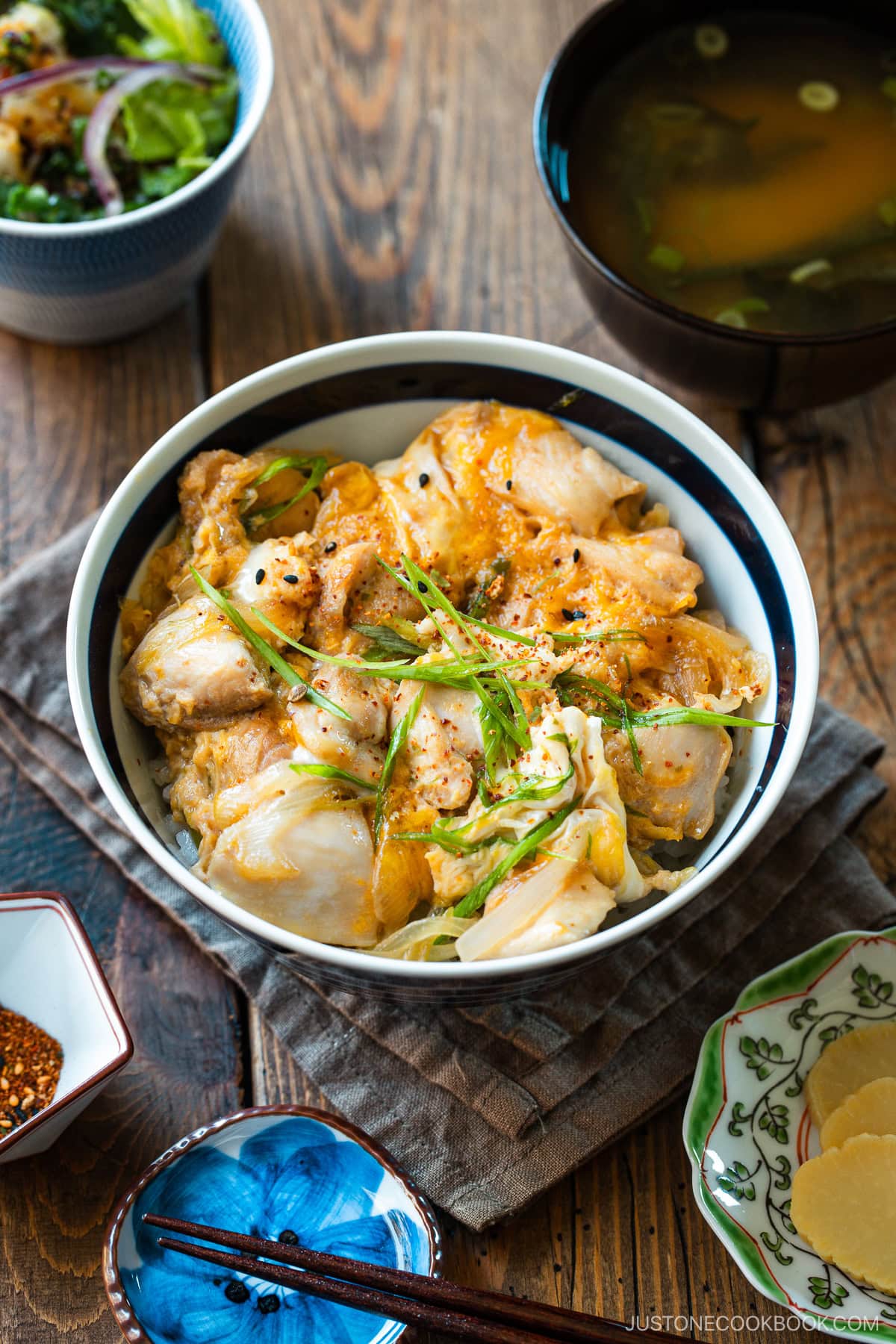
Hello, rice bowl in 10 minutes! Many of you have made my classic Oyakodon recipewhich we cook in a special single-serving pan. This time, we’ll make this Chicken and Egg Bowl in the Dezin Electric Cooker. By using the pot, the cooking time will be cut down from 30 minutes to 10 minutes! Did I hear a hooray for that?
I developed this recipe for our Easy College Meal Seriesbut it’s also perfect for working adults who are on a time crunch.
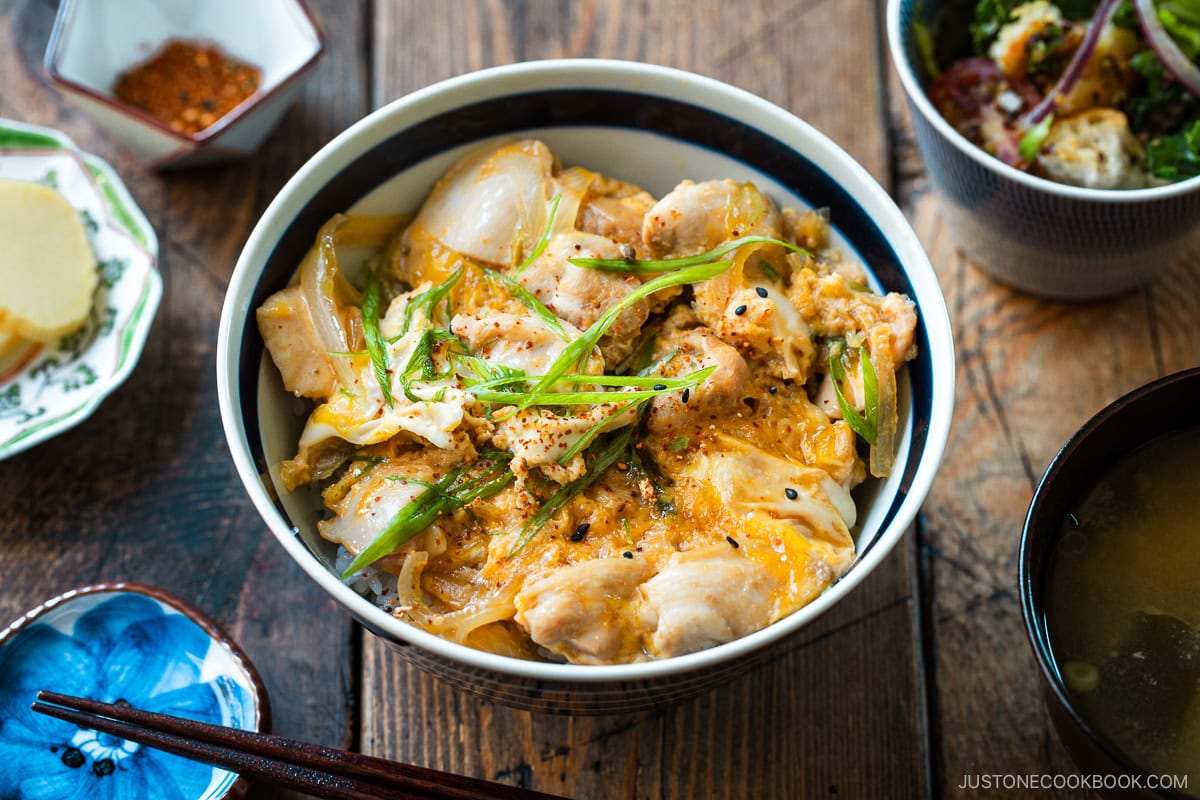
Oyakodon in Quick Summary
Hearty and protein-packed, oyakodon (親子丼) is pure comfort food. It features tender chicken and soft eggs simmered in a savory-sweet broth and gently laid over a bed of fluffy white rice.
The dish has long been a staple for Japanese households and office workers who often work long hours.
You can learn more at my original Oyakodon recipe post.
Why You’ll Love This Recipe
- It’s a recipe for hectic days when you’re famished and need something cozy, filling, and satisfying.
- Easy pantry ingredients!
- You only need an electric pot (or a small pot over the stove), a cutting board, and a knife. Perfect for college students!
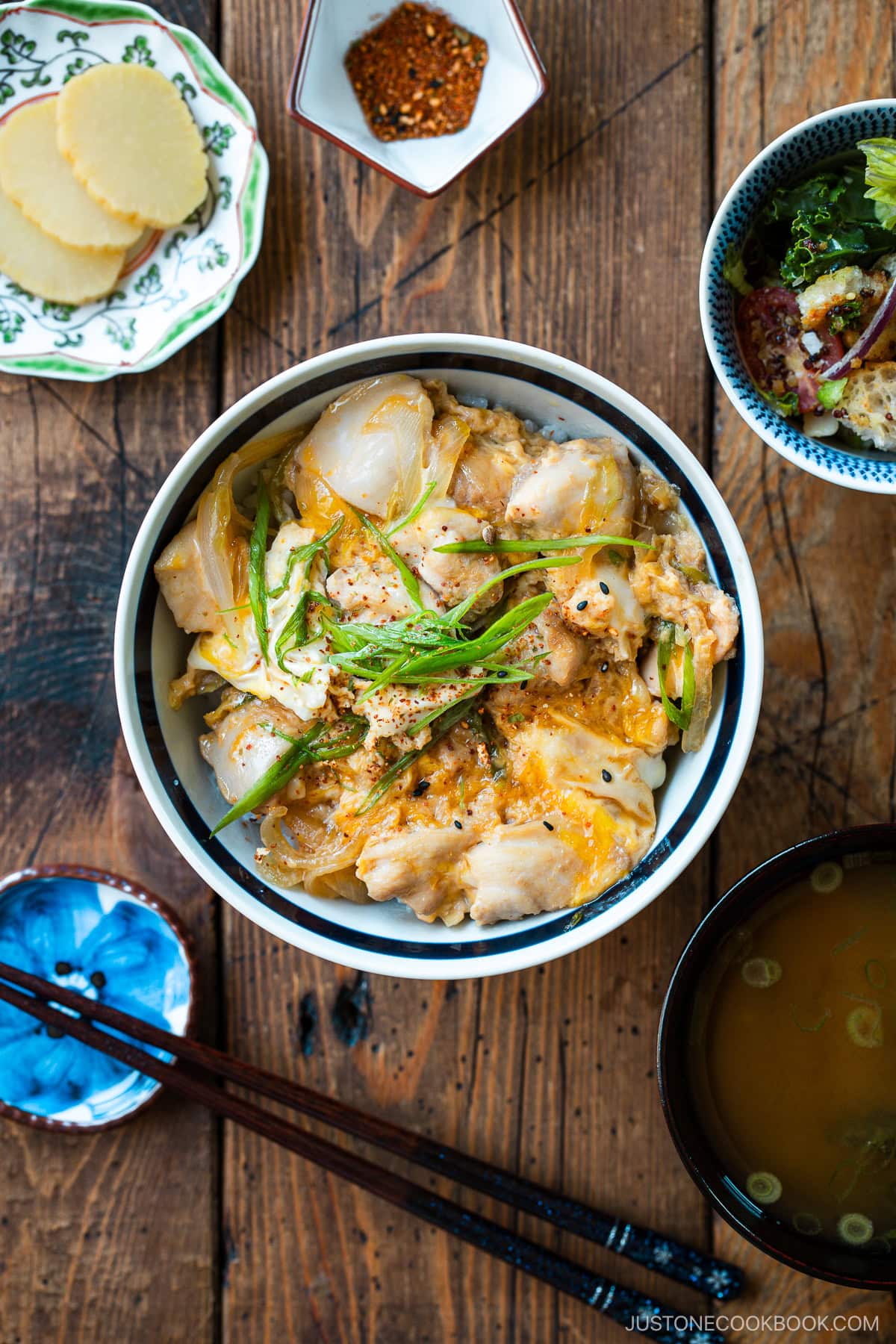
Ingredients for Oyakodon
- Onion — When cooked, it becomes tender and adds sweetness to the dish!
- Chicken thighs — I recommend thighs over breasts because the fattier thighs are more flavorful, tender, and forgiving.
- Eggs
- Seasonings — Dashi powder (Japanese soup stock)soy sauce, mirin, and sugar
- Steamed Rice
- Garnish — Thinly sliced green onion
- Optional seasoning at the table — Shichimi Togarashi (Japanese seven spices) for a spicy kick
Substitution Tips and Variations
The core of this dish is composed of chicken and eggs, as the name “Oyakodon” means parent and child donburi (rice bowl), implying chicken and egg as parent and child. If you substitute the chicken or eggs, it is technically no longer “oyakodon”—unless you use salmon and roe.
However, I understand you might need to improvise sometimes, so here are some tips:
- Dashi powder — I normally use a dashi packet to make dashi (Japanese soup stock)but for one serving (1/4 cup), dashi powder is the easiest option! You can get dashi powder on Amazon.
- Chicken — You can use other proteins, but the cooking time will vary depending on you use. For example, shredded or thinly sliced pork or beef requires full cooking, while tofu or mushrooms only need to be heated until warm.
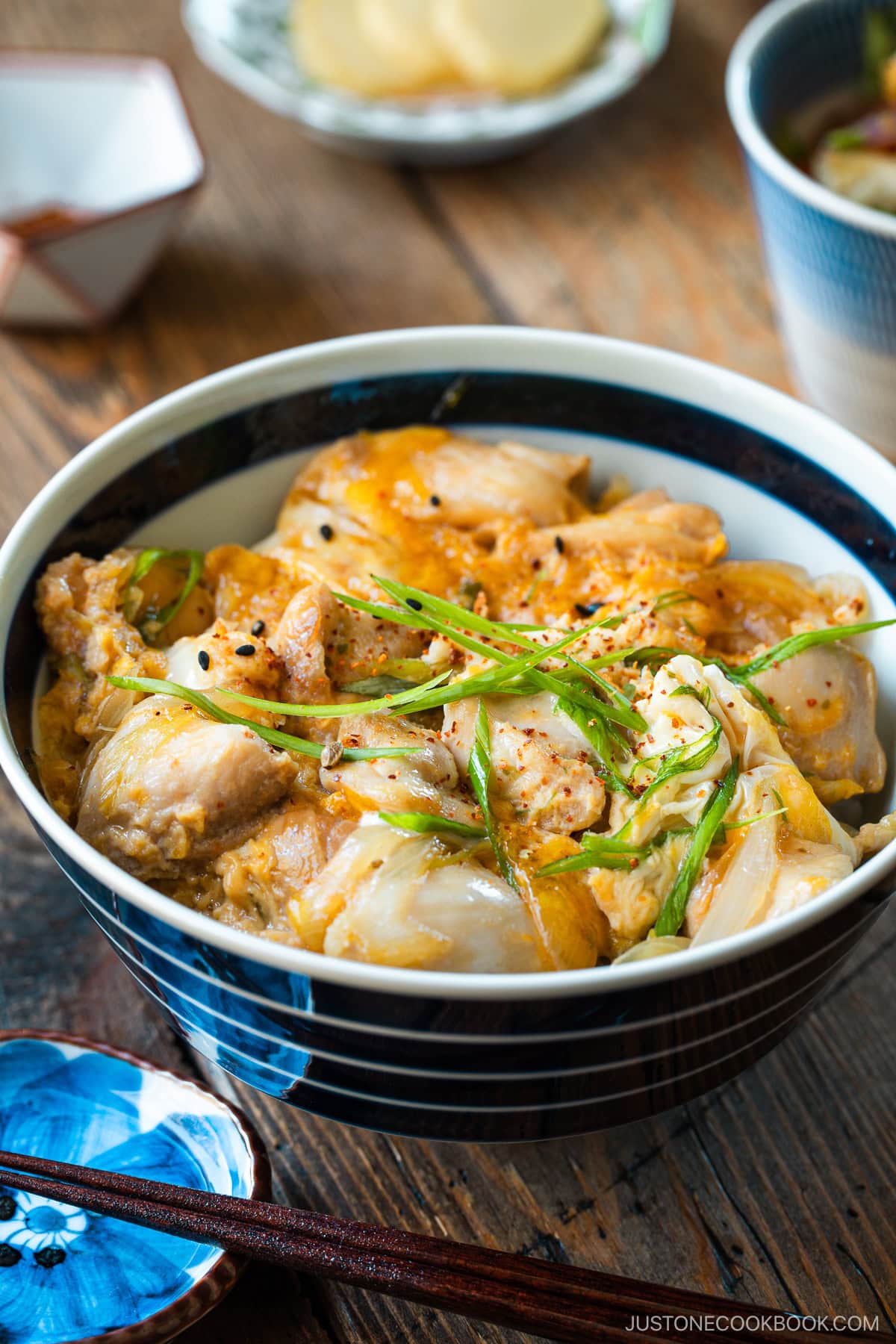
How to Make Oyakodon in a Pot
- Cut the onion, green onion, and chicken. Crack and gently beat the eggs a few times.
- Place the seasonings and all the ingredients (except for the eggs and green onions) in the pot and start cooking on high for 3 minutes.
- Flip the chicken and cook on high for an additional 1-2 minutes or until the chicken is no longer pink.
- Lower the heat and drizzle in the eggs. Add the green parts of the green onion.
- When the eggs are no longer runny, spoon the finished dish over the bed of steamed rice in a donburi bowl. Drizzle with some of the remaining broth. and sprinkle shichimi togarashi, if desired. Enjoy!
Recipe Tips and Techniques
- Cut the chicken into 1-inch (2.5 cm) pieces so that it cooks quickly and is easier to incorporate with the onions and soft-cooked eggs.
- When you add the eggs, make sure the broth is simmering.
- Don’t overcook the eggs. The soft egg is essential for oyakodon.
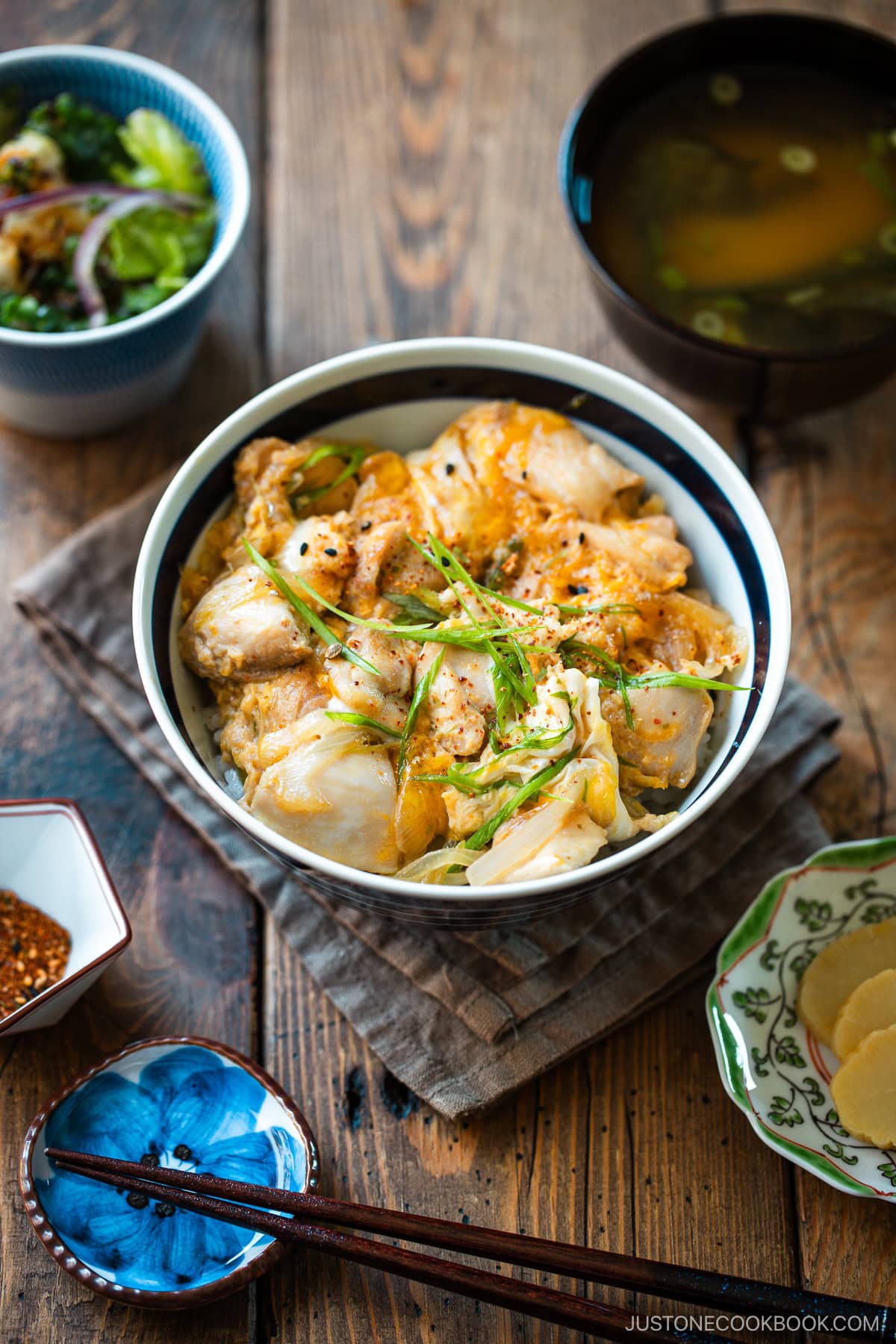
How to Store
You can store the leftovers in an airtight container and refrigerate for 2 days.
Easy College Meal Series
We use this versatile Dezin Electric Cooker to cook various dishes, including my son’s favorites like 10-Minute Elevated Instant Ramen. You can use your saucepan or frying pan to cook these dishes instead of the Dezin as well.
I hope you enjoy this 10-Minute Oyakodon Recipe. Don’t miss the video, which my son actually cooked following my recipe on Instagram!
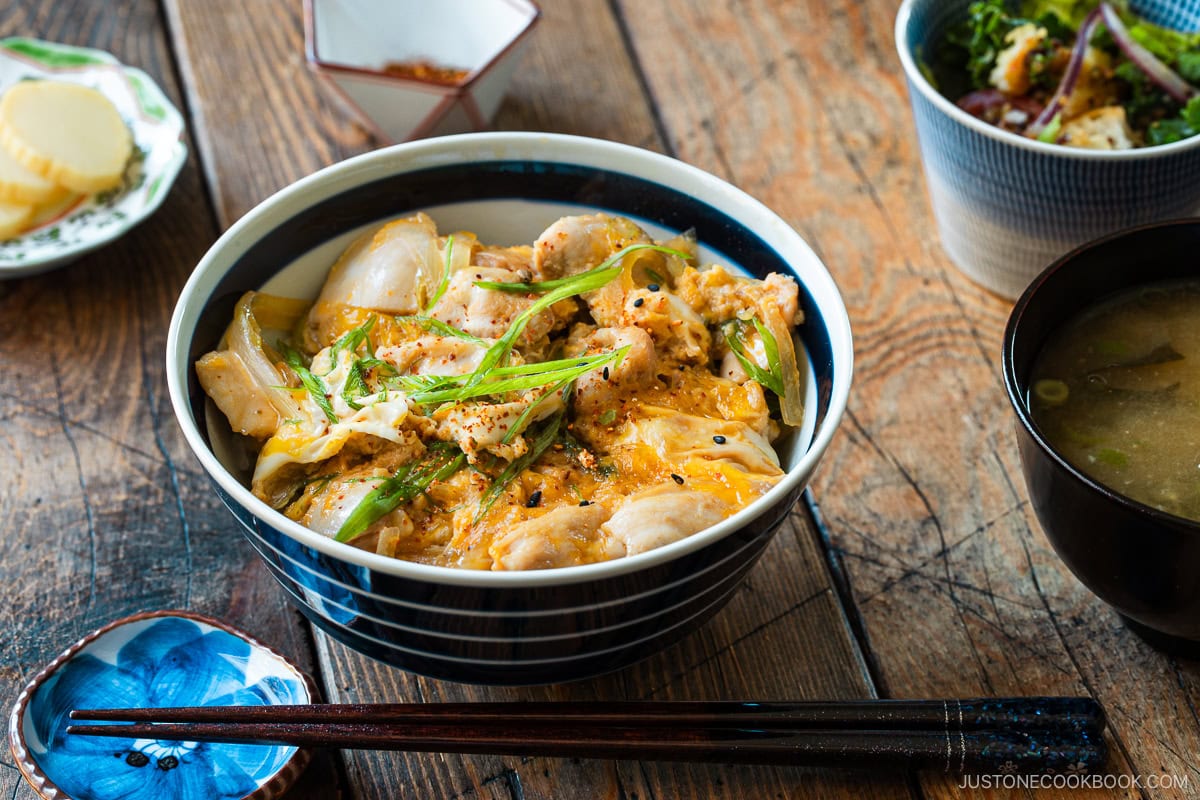
Prevent your screen from going dark
-
Gather all the ingredients. I use an electric pot for this recipe and others in the 10-Minute Meal series. You also could use a regular saucepan on the stove.
To Prep the Ingredients
-
Cut ¼ onion into thin slices.
-
Cut 1 green onion/scallion diagonally. Keep the green part and white part in separate piles.
-
Cut 5 oz chicken thigh into bite-size pieces, about 1 inch (2.5 cm) square. To do so, cut the chicken along the grain into strips 1 inch (2.5 cm) wide. Then, angle your knife back diagonally and slice the chicken strips against the grain into flat pieces. This Japanese cutting technique called sogigiri creates pieces of equal thickness and more surface area for faster cooking and better flavor absorption.
-
Crack 2 large eggs (50 g each w/o shell) in a small bowl. Cut the egg whites with your chopsticks a few times to break them into smaller clumps, then lightly beat the eggs. (For this quick version, we don’t need to follow the same egg preparation technique as regular oyakodon.)
To Cook the Oyakodon
-
Without turning on the heat (until step 3), add ⅓ cup water, ½ tsp dashi powder, 1 Tbsp soy sauceand 1 Tbsp mirin to the cold pot.
-
Add 1 tsp sugarthe onion, and the white part of the green onion.
-
Place the chicken pieces on top of the onion in a single layer. Now, turn on the heat to medium-high or Mode II (600W) on the electric pot.
-
Cover with a lid and cook for 3 minutes.
-
Using a pair of tongs or chopsticks, flip the chicken to cook the other side. If the broth is evaporating too quickly, you may add 1–2 Tbsp water here.
-
Cover to cook for an additional 1–2 minutes. Then, reduce the heat to medium or Mode I (250W) and open the lid.
-
Drizzle the beaten egg in a spiral pattern over the chicken and onions. Sprinkle the green part of the green onion on top of the drizzled egg. Cook until the egg just sets. When the egg is no longer runny, turn off the heat.
To Serve
-
Add 1 serving cooked Japanese short-grain rice to a donburi bowl and transfer the oyakodon and simmering sauce on top. Serve immediately. Sprinkle with shichimi togarashi (Japanese seven spice)if you’d like.
©JustOneCookbook.com Content and photographs are copyright protected. Sharing of this recipe is both encouraged and appreciated. Copying and/or pasting full recipes to any website or social media is strictly prohibited. Please view my photo use policy here.

